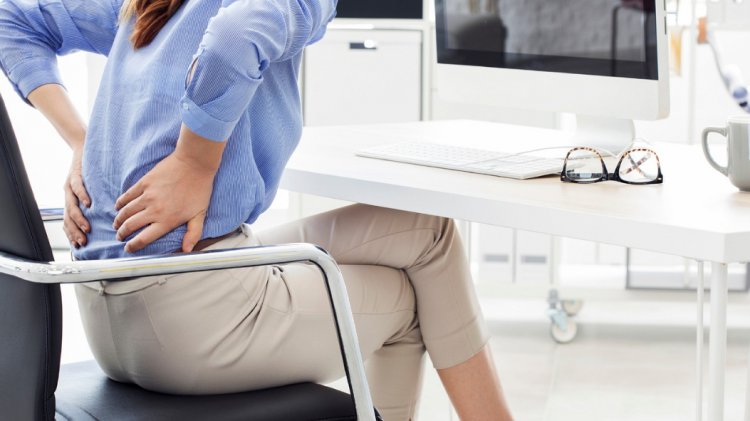Road to Recovery: Treatment Strategies for Lumbar Disc Herniation
A lumbar herniated disc, commonly referred to as a "slipped disc" or "ruptured disc," is a prevalent condition that affects the lower portion of the spine. This condition occurs when the inner core of the spinal disc protrudes through the outer layer, placing pressure on nearby nerves. Lumbar herniated discs can lead to significant discomfort and impairment in daily activities. In this article, we will explore the causes, symptoms, diagnosis, and treatment options for lumbar herniated discs.

Causes
Lumbar herniated discs often develop due to age-related degeneration of the spinal discs. As people age, the discs lose water content and elasticity, making them more susceptible to tears and ruptures. However, disc herniation can also result from sudden trauma or injury to the spine, such as lifting heavy objects incorrectly or engaging in activities that involve repetitive bending and twisting motions.
Symptoms
The symptoms of a lumbar herniated disc can vary depending on the location and severity of the herniation. Common symptoms include:
- Lower back pain: Pain in the lower back is a typical symptom of lumbar disc herniation. The pain may be dull, sharp, or throbbing and may radiate down one or both legs.
- Leg pain (sciatica): Herniated discs often compress the sciatic nerve, leading to pain, numbness, tingling, or weakness that radiates from the buttocks down the back of the leg.
- Numbness and tingling: Patients may experience sensations of numbness or tingling in the legs, feet, or toes.
- Muscle weakness: Weakness in the leg muscles may occur, making it difficult to stand, walk, or perform daily activities.
Diagnosis
Diagnosing a lumbar herniated disc typically involves a combination of medical history, physical examination, and diagnostic imaging tests. During the physical exam, the healthcare provider may assess the patient's range of motion, reflexes, and muscle strength. Imaging tests such as X-rays, MRI (magnetic resonance imaging), or CT (computed tomography) scans may be ordered to visualize the spinal structures and identify any abnormalities, such as disc herniation or nerve compression.
Treatment
Treatment for lumbar herniated discs aims to alleviate pain, reduce inflammation, and improve mobility. The appropriate treatment plan may vary depending on the severity of symptoms and the individual's overall health. Common treatment options include:
- Rest and activity modification: Resting the affected area and avoiding activities that exacerbate symptoms can help reduce pain and inflammation.
- Pain medication: Over-the-counter or prescription pain relievers, such as nonsteroidal anti-inflammatory drugs (NSAIDs) or muscle relaxants, may be recommended to alleviate pain and discomfort.
- Physical therapy: Physical therapy exercises and techniques can help strengthen the muscles supporting the spine, improve flexibility, and alleviate pressure on the affected nerves.
- Epidural steroid injections: Injections of corticosteroids into the epidural space around the spinal cord can help reduce inflammation and provide temporary relief from pain.
- Surgery: In severe cases where conservative treatments fail to provide relief, surgical intervention may be considered. Surgical options for lumbar herniated discs include discectomy (removal of the herniated portion of the disc) or spinal fusion to stabilize the spine.
Prevention
While lumbar herniated discs cannot always be prevented, there are steps individuals can take to reduce their risk, including:
- Maintaining a healthy weight: Excess weight can put added stress on the spine and increase the risk of disc herniation. Maintaining a healthy weight through proper diet and exercise can help reduce this risk.
- Practicing proper lifting techniques: When lifting heavy objects, bend at the knees and use your legs to lift, rather than bending at the waist. Avoid twisting motions while lifting.
- Strengthening the core muscles: Strengthening the muscles of the abdomen and lower back can help support the spine and reduce the risk of injury.
- Using proper ergonomics: Maintain good posture while sitting, standing, and performing activities to reduce strain on the spine. Use ergonomic furniture and equipment when possible.
In conclusion, lumbar herniated discs are a common spinal condition that can cause significant pain and discomfort. By understanding the causes, symptoms, diagnosis, and treatment options for this condition, individuals can take steps to manage their symptoms effectively and reduce the risk of further complications. Seeking prompt medical attention and following a comprehensive treatment plan can help improve outcomes and restore quality of life for those affected by lumbar herniated discs.
Clinics in the UK
- London Spine Clinic
- The Harley Street Clinic, London
- The Spine Surgery London
- Nuffield Health Bristol Hospital, The Chesterfield
- Royal National Orthopaedic Hospital, Stanmore
Clinics in Turkey
- Acıbadem Healthcare Group, Istanbul
- Florence Nightingale Hospital, Istanbul
- Memorial Hospital, Istanbul
- Anadolu Medical Center, Istanbul
- Medical Park Hospitals Group, Istanbul

Coupoly offers a complimentary Medical Concierge Service, connecting you with leading doctors and clinics.
Reach out to us today.
Get in Touch
What's Your Reaction?





















